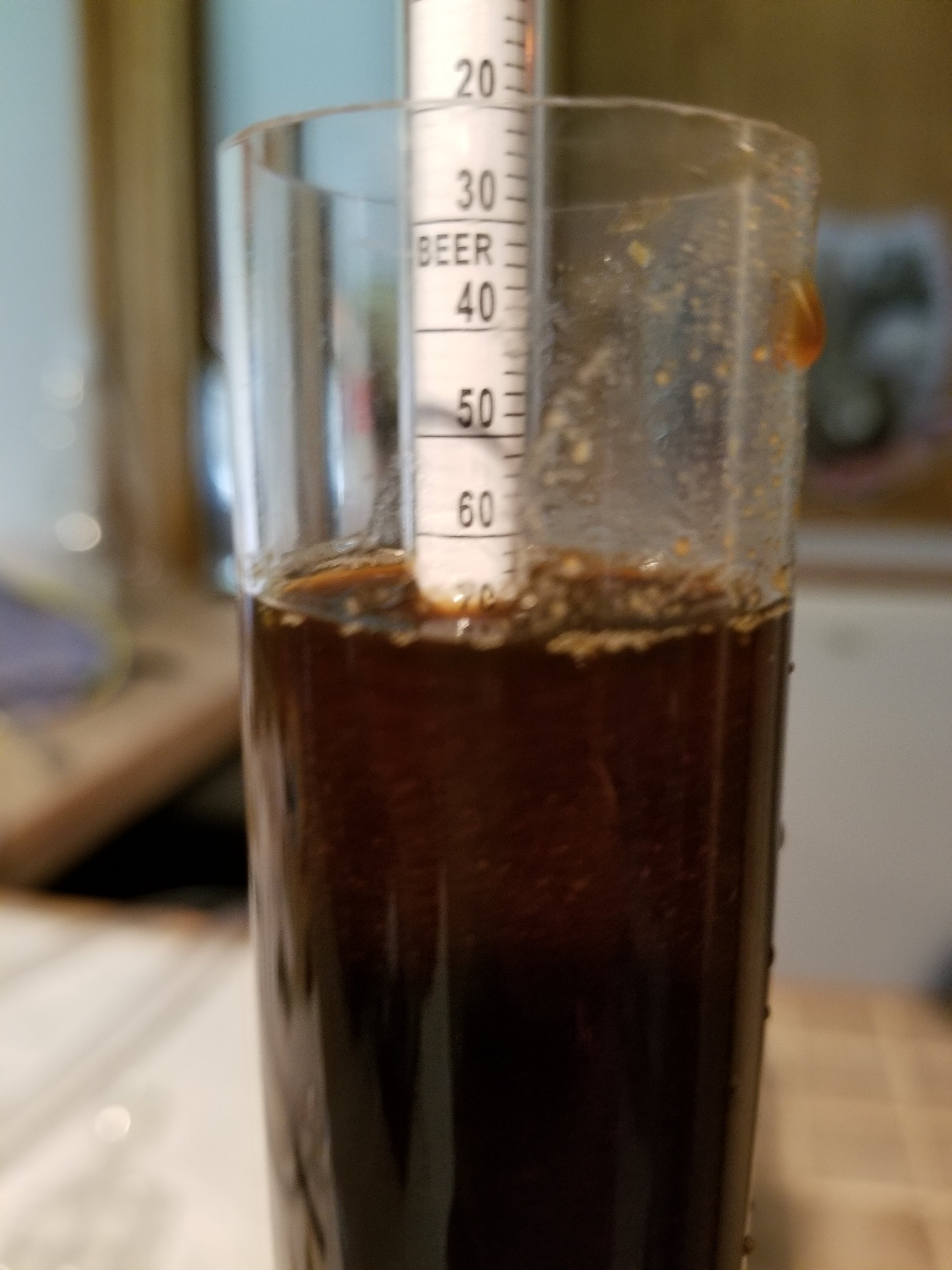Recipe Specifications
--------------------------
Batch Size: 6.00 gal
Boil Size: 7.50 gal
Estimated OG: 1.069 SG
Estimated Color: 50 SRM
Estimated IBU: 22.3 IBU
Efficiency: 75.00 %
Boil Time: 60 Minutes
Ingredients:
------------
8.81 lbs Maris Otter 61%
1.22 lbs Crystal 60L 8%
1.30 lbs Chocolate Malt (350 SRM) 7%
1.25 lbs Roasted Barley 6%
.81 lbs Flaked Barley 5%
.70 lbs Flaked Oats 5%
Mash at 154*F for 60 minutes
.35 oz Magnum @ 60 minutes
1.0 oz East Kent Goldings @ 10 minutes
1.0 lb Lactose @ 10 minutes
1.5L Starter of WY1056, chilled and decanted
Ferment at 65*F until complete
1. My goal is a milk stout that is more chocolatey than roasty but can still have some roastiness.
2. I want to add something to this after fermentation is complete - cherries, coconut/almonds, peanut butter, cherries and grahams (grahams during mash). Something along these lines. Any suggestions?
--------------------------
Batch Size: 6.00 gal
Boil Size: 7.50 gal
Estimated OG: 1.069 SG
Estimated Color: 50 SRM
Estimated IBU: 22.3 IBU
Efficiency: 75.00 %
Boil Time: 60 Minutes
Ingredients:
------------
8.81 lbs Maris Otter 61%
1.22 lbs Crystal 60L 8%
1.30 lbs Chocolate Malt (350 SRM) 7%
1.25 lbs Roasted Barley 6%
.81 lbs Flaked Barley 5%
.70 lbs Flaked Oats 5%
Mash at 154*F for 60 minutes
.35 oz Magnum @ 60 minutes
1.0 oz East Kent Goldings @ 10 minutes
1.0 lb Lactose @ 10 minutes
1.5L Starter of WY1056, chilled and decanted
Ferment at 65*F until complete
1. My goal is a milk stout that is more chocolatey than roasty but can still have some roastiness.
2. I want to add something to this after fermentation is complete - cherries, coconut/almonds, peanut butter, cherries and grahams (grahams during mash). Something along these lines. Any suggestions?









![Craft A Brew - Safale S-04 Dry Yeast - Fermentis - English Ale Dry Yeast - For English and American Ales and Hard Apple Ciders - Ingredients for Home Brewing - Beer Making Supplies - [1 Pack]](https://m.media-amazon.com/images/I/41fVGNh6JfL._SL500_.jpg)


















































